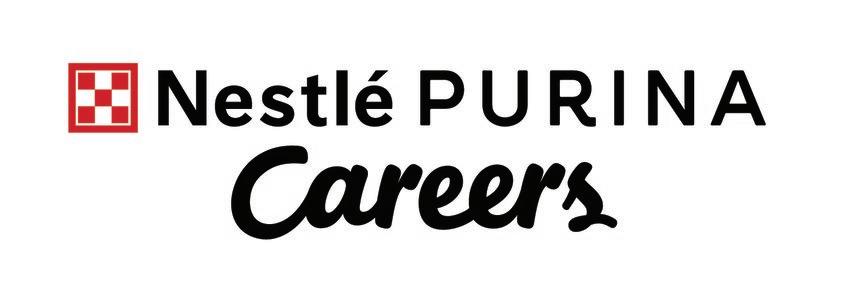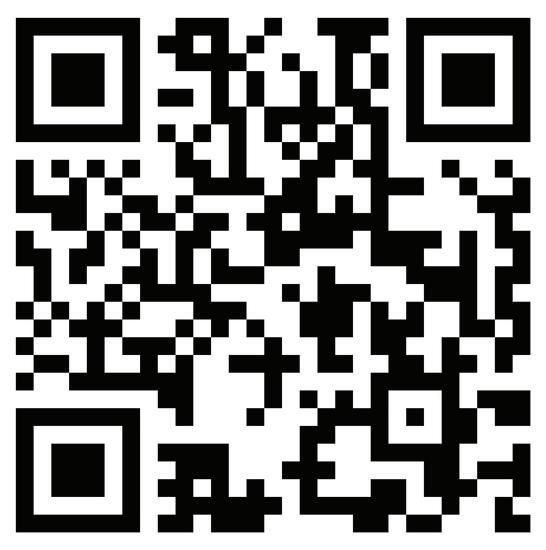GET JOBthe
Wednesday, August 27th









Wednesday, August 27th









Professionals know that standing out in a crowded field of applicants has long been a challenge when seeking a new job. But that challenge grew significantly more difficult in the internet era, when it became vastly easier and quicker to apply for a new opportunity but simultaneously more difficult to stand out from the many other applicants who could apply in a few minutes or less.
The modern job market certainly requires a different approach to finding a job than in years past. However, some useful points can help talented professionals find their next job.
• Hone your networking skills.
Networking is a vital skill for modern professionals, including those looking for a new job. Though internet reports suggest as much as 85 percent of job openings are now filled through networking, that data has been debunked and characterized as a myth. Still, networking can help professionals learn about openings before they’re listed (if they’re even listed at all) and also provide insight into a company’s culture.
• Create a visible online profile.
LinkedIn was long considered the go-to platform for professionals to establish an online profile, and that’s largely still the case. Though some LinkedIn users complain that jobs advertised on the site are not removed even weeks after they’ve been filled and others feel the site has become a more traditional social networking site and less a professional networking platform in recent years, it’s still a go-to platform among human resources professionals and recruiters. In fact, a recent report from Jobvite found that 87 percent of recruiters utilize LinkedIn to identify candidates. So while some may view LinkedIn as less useful than it used to be, HR professionals continue to value it.
• Create an informative online profile.
It’s important to have an online profile in the modern professional world and equally vital to make that profile as informative as possible. Avoid lengthy sentences that HR professionals and others are unlikely to read in favor of bullet points of relevant experiences and skills. It’s possible to be both concise and informative, and professionals should aspire to be both when crafting their online profile.
• Keep looking.
Though it’s hard to confirm various online claims regarding how many applications the average job seeker submits before landing a new job, various sources indicate a person can expect to apply for as many as 200 jobs before successfully finding new work. That’s a lot of leg work and frustration, but it’s vital that professionals avoid waving the white flag. A new opportunity will eventually arise, particularly for those who fully commit to finding a new job.

The modern job market can be difficult to navigate. But diligent and dedicated professionals who commit to the process can land a fulfilling job.
Individuals go to work each day to provide for themselves and their families. Working provides many benefits, but it also exposes people to some risks. For some, those risks include eye injuries.
The National Institute for Occupational Safety and Health says about 2,000 workers sustain job-related eye injuries that require medical treatment each year in the United States. According to the Canadian Association of Optometrists, more than 700 eye injuries are reported in Canada every day, and over 200 of those injuries occur in the workplace. Employment-related injuries can be traced to hazards like chemicals, radiation, dust, and flying debris. The U.S. Bureau of Labor Statistics found that almost 70 percent of the accidents studied on the job resulted from flying or falling objects or sparks striking the eye. However, digital eye strain from working on a computer on a daily basis also affects professionals’ eyes.
Preventing eye injuries often comes down to recognition of hazards and what can be done to avoid common injuries. These tips can help.
• Employees should be educated and trained on all dangers specific to the workplace.
• Employers should install barrier and shields in areas prone to flying debris and dust.
• Employees working in hazardous environments should have access to and be wearing eye safety equipment at all times.
• The proper use of eye safety equipment means using the right kind of protection for the job. Forms of eye protection include goggles, safety glasses, face shields, or full face respirators.
• Employees should take breaks when working on the computer. To help alleviate digital eye strain, experts recommend the 20-20-20 rule. This means taking a 20-second break to view something 20 feet away every 20 minutes.

• Special filters can protect the eyes from optimal radiation exposure. Filters can be used when welding or working with lasers.
• Employees should recognize that contact lenses can’t provide protection from eye hazards in the workplace. However, contact lenses can provide improved vision in the workplace. According to the American Optometric Association, workers should be allowed to wear contact lenses in most eye-hazardous environments, provided they wear eye protection over the contact lenses.
Prevent Blindness America says 90 percent of all workplace eye injuries can be avoided by wearing proper safety eyewear and following the safety guidelines recommended for each particular industry.
Young adults newly introduced to the professional arena may not immediately be thinking of the future when their careers will come to a close. Retirement may seem like a distant goal when it’s 50 years or more away. However, pushing off retirement savings because it is not viewed as a necessity could turn out to be a significant mistake.
According to Mass Mutual, the economic disruption caused by the global pandemic pushed retirement to the bottom of many workers’ lists of financial priorities. That was especially so among young professionals. A 2019 survey found roughly half of millennial and Generation Z professionals believe they are not saving enough for retirement. Student loan burdens are another reason why certain people may delay saving for retirement until they are older. Young workers need to get the facts about retirement. For example, The U.S. Social Security Administration says that Social Security taxes that people now pay into the Social Security Trust funds that used to pay benefits to current beneficiaries, not future ones. The Board of Trustees estimates that, in 2041, and based on current law, the Trust Funds will be depleted since people are living longer and the birth rate is low. The taxes being paid now will not be enough to pay the full benefit amounts scheduled for future retirees.
Young people can no longer rely on Social Security benefits to finance their retirements in the United States. Rather, young workers need to be proactive and take control of their own retirement savings.
• Experts advise following the general rule of saving 10 percent to 12 percent of your salary when you are in your 20s, including factoring in any employer match.
• Working for companies that offer defined-contribution plans like a 401(k) or 403(b) can make it easier for young professionals to begin saving for retirement.
• Setting aside a portion of your income early on in retirement savings ensures more years of savings and investments will benefit from decades of compounding.
• Those who contribute to a retirement plan may receive an immediate tax break because the contributions come out of paychecks before taxes are withheld. Many of these plans also offer the advantage of tax-deferred growth. This translates to not being required to pay taxes each year on capital gains, dividends or other yield distributions if the money is not withdrawn before age 591⁄2 . Speak with a financial advisor to learn more about tax-advantaged accounts.
• T. Rowe Price says there are certain benchmarks that can help people save enough money for retirement. By age 30, you should have .5 times the amount of your salary. At age 35, that amount should increase to 1.5 times your salary. These numbers are based on an assumed retirement age of 65 and with a household income growth of 5 percent until age 45 and 3 percent thereafter.
• According to research from Qualtrics, young workers don’t plan on working until they can receive full benefits from Social Security. Twenty-four percent plan to retire early, and 41 percent want to do so by the time they turn 50. That could spark more ambition among younger generations to save for retirement and to save more aggressively.
Even if retirement is many years in the future, young workers need to start saving for retirement early on to be able to retire comfortably.

The road to graduation can be long and winding. Graduation often is an exciting time in a person’s life. However, it also may spark some anxiety as newly minted grads prepare to look for jobs and begin their careers. An unpredictable economic climate coupled with the rising cost of education can make soon-to-be graduates curious about what awaits them after graduation. According to the market data reporting firm Gitnux, 86 percent of college graduates can expect to find jobs within six months of graduation.
While the economy can affect how quickly new grads begin their careers, it’s not the only variable that affects where grads go after tossing their caps in the air. Students on the cusp of graduation can employ various strategies to increase their chances of finding a job.
• Start while in school. It’s never too early to think about the hiring process and what can be done to improve your profile as a candidate. Maintain a grade point average that will impress employers, suggests Indeed. Also, part-time jobs and internships in your field will help you gain valuable experience and determine if working in a particular field is a good fit.
• Select an off-peak time to search for a job. Many people start searching and applying for jobs at the same time, typically after graduation ceremonies in December and May. That floods the market with applicants. Increase the chances your résumé is read by staggering when you apply for jobs and sending out inquiries before you graduate.
• Streamline your résumé. Many companies receive thousands of applications per position, so it is essential to cater your résumé to the specific job to which you are applying. Include key words that match those in the job listing and will attract the attention of hiring managers. If you do not yet have experience, replace that section on the résumé with your accomplishments or special projects you have worked on.
• Network as much as possible. Many job openings are learned about through personal relationships. Employers may not advertise widely and hope that word of mouth will bring applicants to their doors, or through recommendations from other employees. Reach out to academic advisors, former professors and colleagues in your academic department. Be sure to maintain these networking relationships.
• Consider growth-stage companies. The University of Missouri Career Center says growth-stage companies tend to hire entry level professionals who do not necessarily have a lot of experience. These are fast-growing companies looking to expand their operations and build company culture.
• Utilize networking social media apps. Indeed and LinkedIn enable people to network and make it easy to apply for jobs directly through their sites or apps. There’s even the option to passively apply for jobs by having a résumé uploaded where companies can search and find you if your skills are a match.
Finding a job after graduation is a priority for graduates anxious to begin their careers. Various strategies can help new grads find work sooner rather than later.




















